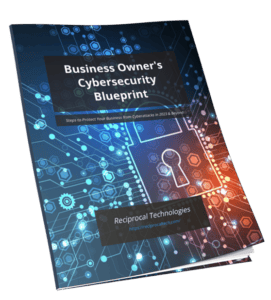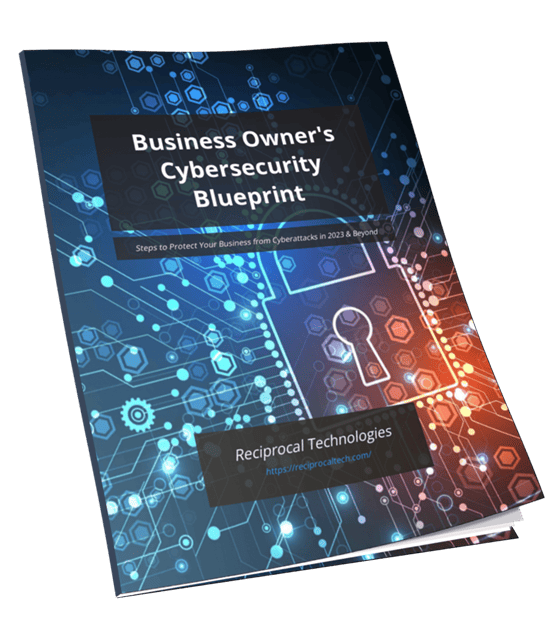Why Indianapolis IT Compliance Is Essential for Government Agencies

Government organizations face significant cybersecurity challenges due to the increasing sophistication of cyber threats that pose risks to data integrity, operational efficiency, and national security. Protecting public data is not merely a technical issue; it’s essential for maintaining the trust of citizens.
Key challenges include:
- Outdated Systems: Many government agencies rely on legacy systems that are vulnerable to attacks.
- Insufficient Training: A lack of employee training contributes to insider threats and data breaches.
- Unsecured IoT Devices: As IoT devices proliferate, their security vulnerabilities become potential entry points for malicious actors.
For agencies in Indiana, Indianapolis managed solutions can provide targeted intervention and support. Managed IT services play a crucial role in enhancing cybersecurity measures within government offices. By outsourcing IT management, agencies can access advanced security solutions tailored to their unique needs. This approach helps improves network security while ensuring compliance with relevant regulations.
Below, we’ll explain:
- Common vulnerabilities in government cybersecurity
- The importance of cloud solutions and AI analytics
- Effective data governance policies and backup strategies
- How managed IT services can optimize resources while ensuring data protection
Understanding Cybersecurity Risks for Government Offices
Government offices face numerous cyber threats that can compromise sensitive public data and disrupt services. Identifying common vulnerabilities is crucial in fortifying defenses. Key areas of concern include:
- Outdated Systems: Many government agencies still rely on legacy systems, which lack modern security features. These systems are prime targets for cybercriminals.
- Unsecured IoT Devices: The increasing use of Internet of Things (IoT) devices in public institutions often leads to insufficient security measures, making them easy entry points for attackers.
Inadequate employee training significantly exacerbates these vulnerabilities. When staff members lack knowledge about proper data handling and security practices, the likelihood of falling victim to phishing schemes or social engineering attacks rises substantially.
Insider threats pose a considerable risk. Disgruntled employees or those unaware of security protocols can inadvertently or maliciously expose sensitive information. Establishing a robust training program focused on cybersecurity awareness is essential for mitigating these risks and fostering a culture of security within government organizations.
Modernizing Cybersecurity Infrastructure with Cloud Solutions
The digital transformation of government agencies relies heavily on adopting modern cybersecurity solutions. Cloud-based platforms have become essential tools in enhancing data security, offering scalability and flexibility that legacy systems cannot match.
Key benefits of cloud data platforms include:
- Enhanced Security Protocols: Snowflake adheres to rigorous cybersecurity standards, ensuring that sensitive public data is protected against unauthorized access.
- Scalability: As government data needs grow, Snowflake provides elastic storage and compute resources, allowing agencies to expand their capabilities without significant infrastructure investment.
- Centralized Data Management: A unified cloud platform simplifies data governance, making it easier for agencies to manage access controls and monitor activity.
Transitioning to a cloud-based environment also supports better incident response times. With integrated security analytics, agencies can identify threats more efficiently and respond swiftly to potential breaches. The combination of advanced technology and robust security measures makes cloud solutions a vital component in modernizing the cybersecurity infrastructure of government offices.
Leveraging AI-Enabled Security Analytics for Threat Detection and Response
AI-enabled security analytics is changing the way organizations approach cybersecurity, especially government offices that deal with ongoing threats. With the help of machine learning algorithms and advanced data analysis methods, these organizations can greatly improve their ability to detect threats.
Key benefits of AI in cybersecurity include:
- Real-time Monitoring: AI systems continuously analyze large amounts of data, instantly identifying suspicious activities as they happen. This quick action allows for faster responses to potential breaches.
- Anomaly Detection: Machine learning models learn from past data patterns, enabling them to spot deviations that may indicate a cyber threat. This proactive approach reduces the time frame in which attackers can operate.
- Automated Incident Response: AI can enable automated responses to detected threats, cutting down the time it takes to neutralize potential attacks. For instance, if a ransomware attack is identified, the system can automatically isolate affected systems to stop further spread.
- Enhanced Predictive Capabilities: AI tools can predict upcoming threats by analyzing trends and behaviors in the cyber world. This foresight gives government agencies an advantage over malicious actors.
Implementing AI-enabled security analytics not only strengthens defenses but also optimizes resource allocation, allowing personnel to focus on strategic initiatives instead of routine monitoring tasks.
Implementing Comprehensive Data Security Safeguards Beyond Technology Solutions
Securing public data requires more than just advanced technology solutions. A holistic approach encompasses data governance policies, dynamic threat intelligence mechanisms, and effective backup strategies.
1. Data Governance Policies
Establishing robust data governance is essential for managing how data is created, stored, and accessed. By defining roles and responsibilities, government agencies can ensure compliance with regulations while minimizing risks associated with data breaches.
2. Dynamic Threat Intelligence Mechanisms
Utilizing real-time threat intelligence helps organizations stay ahead of evolving cyber threats. This involves integrating automated systems that continuously monitor potential vulnerabilities and provide actionable insights to prevent attacks before they occur.
3. Effective Backup Strategies
Regularly updating backup protocols is crucial for safeguarding public data against loss or corruption. Implementing a multi-tiered backup approach, including both on-site and cloud-based solutions, ensures recovery options are available in the event of a cyber incident.
Combining these elements creates a fortified framework for protecting sensitive information within government offices. Emphasizing the importance of such comprehensive safeguards enhances resilience against cyber threats while maintaining public trust and data integrity.
The Role of Managed Services in Enhancing Cybersecurity for Government Agencies
Outsourcing IT management to a trusted provider can significantly enhance cybersecurity measures within government offices. Managed IT services offer several advantages that directly address contemporary threats like ransomware and supply chain attacks.
Benefits of Managed IT for Government Agencies
- Proactive Monitoring: Continuous monitoring ensures that potential vulnerabilities are identified and mitigated promptly, reducing the risk of cyber incidents.
- Expertise and Resources: Managed service providers (MSPs) come equipped with specialized skills and tools. They stay updated with the latest cybersecurity trends, ensuring that government agencies benefit from cutting-edge defense mechanisms.
- Cost Efficiency: By leveraging managed services, agencies can allocate their budgets more effectively. This model reduces the need for large in-house teams, allowing funds to be redirected towards critical areas like training and technology upgrades.
- Incident Response: In the event of a breach, MSPs provide rapid response capabilities. This minimizes damage and helps restore operations swiftly.
Government organizations face unique challenges in maintaining security. Collaborating with an experienced IT provider empowers these entities to strengthen their defenses without straining limited resources.
Features to Look for in Managed IT Service Providers for Government Entities
When selecting a managed IT service provider, government organizations should prioritize essential features that enhance security and operational efficiency. Important attributes to consider include:
- 24/7 Monitoring: Continuous oversight ensures any potential threats are detected and addressed promptly. This level of vigilance is crucial for safeguarding sensitive public data around the clock.
- Round-the-Clock Support: Immediate access to technical assistance helps mitigate downtime during security incidents. A reliable support system enhances responsiveness to emerging threats.
- Predictable Budgets: Managed services often offer fixed pricing models. This financial predictability allows government agencies to allocate budgets effectively without unexpected expenses disrupting planned initiatives.
- Compliance Assurance: Providers should demonstrate expertise in navigating vast regulatory frameworks. Ensuring data protection compliance is vital for maintaining public trust.
- Scalability: The ability to adapt services based on evolving needs is essential. As technology advances or mission requirements change, providers must offer flexible solutions that grow with the organization.
Choosing a managed service provider that embodies these features equips government entities with robust defenses against cyber threats while maintaining operational integrity.
Enhancing Operational Efficiency Through Managed Solutions While Ensuring Compliance with Regulations
Transitioning to managed IT services presents significant opportunities for improving security and efficiency in government operations. Key benefits include:
- Resource Optimization: Managed services streamline operations, allowing government agencies to allocate resources more effectively. This results in reduced operational costs and improved use of existing technology.
- Extended Technology Lifespan: Regular maintenance and timely upgrades provided by managed service providers enhance the longevity of IT assets. This proactive approach mitigates the risks associated with outdated systems.
Establishing best practices tailored for compliance with regulations such as HIPAA is crucial. These practices should focus on:
- Data Protection Protocols: Implementing robust data governance policies ensures sensitive information remains secure while meeting regulatory standards.
- Regular Training Programs: Continuous education for employees on compliance requirements strengthens the overall security framework, minimizing the risk of human error.
Government entities benefit significantly from these strategies, creating a resilient infrastructure that safeguards public data while maintaining operational effectiveness.
Prioritizing Cybersecurity for Governmental Operations with Managed IT
Government agencies must recognize the pressing need to prioritize cybersecurity as a fundamental aspect of their operations. The rise in sophisticated cyber threats necessitates the adoption of modern technologies such as:
- Cloud platforms for scalable security solutions
- AI analytics to enhance threat detection and response capabilities
By implementing these technologies, agencies can effectively safeguard public data while ensuring uninterrupted services.
Establishing partnerships with reliable managed service providers serves as a vital strategy in bolstering defenses against cyber threats. These partnerships provide access to:
- Advanced security measures
- Continuous monitoring
- Expertise in compliance with regulations
Strengthening these defenses fosters public trust, ensuring that sensitive information remains protected. Agencies can focus on their core missions while enhancing their cybersecurity posture through trusted partnerships. Taking proactive steps now is vital to safeguard security and the well-being of the community.
Frequently Asked Questions About Managed IT
What are the main cybersecurity challenges faced by government organizations?
Government organizations face numerous cybersecurity challenges, including outdated systems, unsecured IoT devices, and the threat of insider attacks. These vulnerabilities can compromise public data security, impacting national security and eroding public trust.
How do managed IT services enhance cybersecurity for government offices?
Managed IT services strengthen cybersecurity measures for government offices by providing expert oversight, 24/7 monitoring, and proactive security strategies. This outsourcing allows agencies to focus on their core missions while ensuring robust protection against cyber threats like ransomware and supply chain attacks.
What key features should government entities look for in managed IT service providers?
Government entities should seek managed IT service providers that offer essential features such as 24/7 monitoring, predictable budgeting, round-the-clock support, and proven expertise in cybersecurity. These features are vital for maintaining secure operations in a constantly evolving threat landscape, including focusing on Indianapolis IT compliance.
How can transitioning to managed IT services improve compliance with regulations?
Transitioning to managed IT services can enhance compliance with regulations such as HIPAA by optimizing resources and implementing best practices tailored to regulatory requirements. This approach not only improves security but also extends the technology lifespan within government agencies through the expertise of IT consulting in Indianapolis IN.
About the Author
Author’s recent posts
Download the
Business Owner’s Cybersecurity Blueprint


